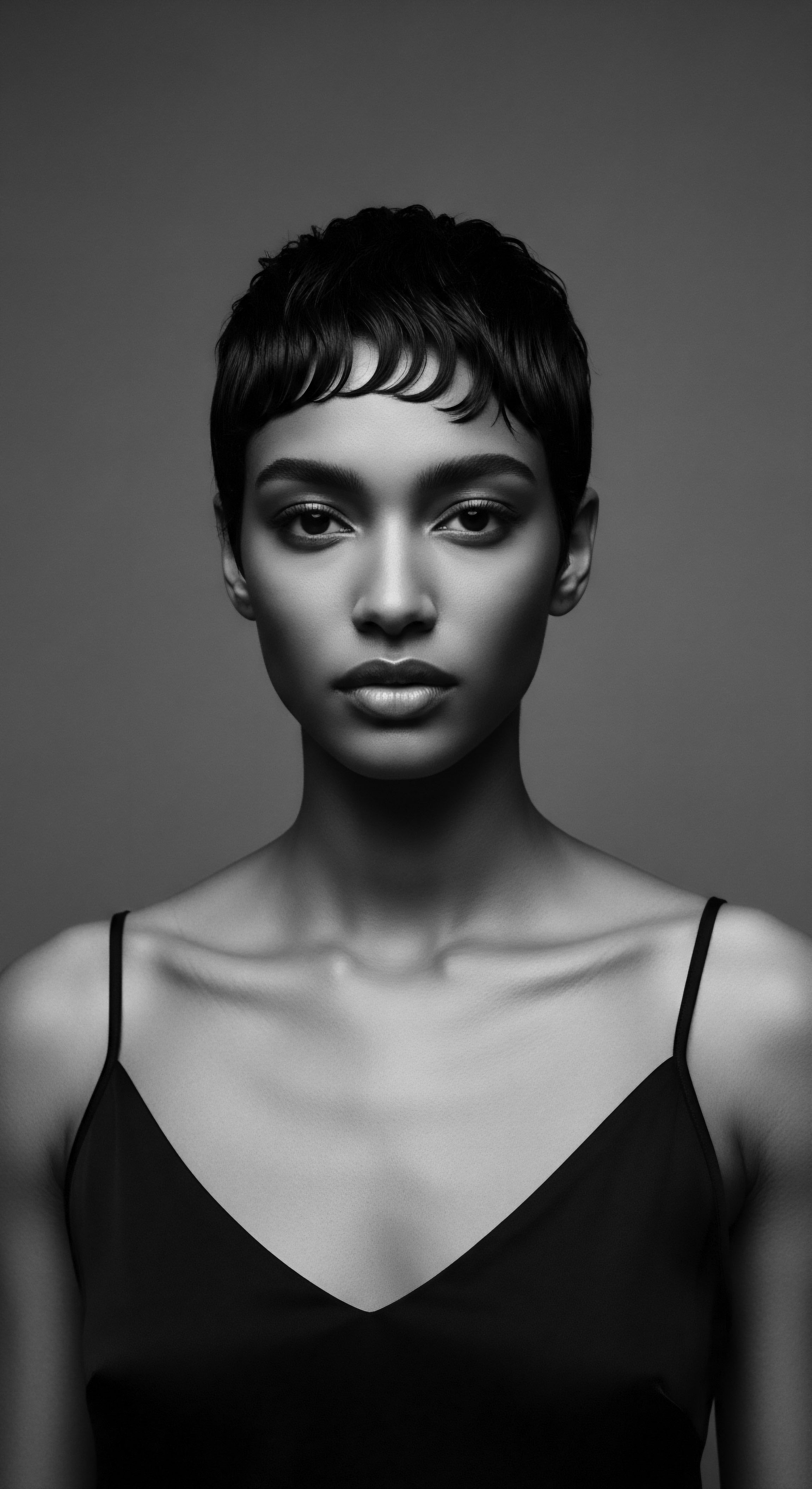
How does hair’s curl pattern relate to moisture?
Textured hair’s coil pattern naturally lifts cuticles, making it prone to moisture loss, which ancestral practices sought to remedy.

What is the scientific basis for hair bonnets in heritage care?
Hair bonnets reduce friction and maintain moisture, scientifically preserving textured hair’s health, a practice deeply rooted in ancestral care.

How does modern science validate ancient hair wrapping for textured hair?
Modern science affirms ancient hair wrapping practices by demonstrating their efficacy in reducing friction and retaining moisture for textured hair.

How do oils support moisture retention in textured hair?
Oils support moisture retention in textured hair by forming protective barriers and penetrating strands, a core principle passed down through ancestral care rituals.

Do plant butters offer lasting moisture to textured hair?
Plant butters seal lasting moisture into textured hair, preserving hydration through a heritage of natural care and scientific protection.

Why does textured hair become dry overnight?
Textured hair's unique structure and lower sebum distribution, coupled with environmental factors, lead to overnight moisture loss, a challenge ancestral practices intuitively addressed.

Can Rhassoul clay truly support textured hair moisture retention?
Rhassoul clay supports textured hair moisture by gently cleansing and conditioning, echoing ancestral practices of natural care.

Why do braids protect textured hair from drying out?
Braids safeguard textured hair from drying out by encasing strands, limiting exposure to drying elements, and reducing mechanical friction, a protective strategy rooted in ancestral wisdom.

How does textured hair’s biology benefit from Chebe’s protective properties?
Chebe protects textured hair by forming a moisturizing, strengthening barrier, deeply rooted in African ancestral heritage to retain length and resist breakage.

Does silk help retain moisture in textured hair?
Silk helps textured hair retain moisture by reducing friction and not absorbing natural oils, echoing centuries of ancestral hair protection methods.

How do traditional sleep coverings maintain textured hair moisture?
Traditional sleep coverings maintain textured hair moisture by reducing friction and creating a protective microclimate, honoring ancestral care methods.

What biological factors in textured hair benefit from historical protective styles?
Historical protective styles preserve textured hair's biological factors by reducing manipulation and enhancing moisture retention, embodying ancestral heritage.

Why is hair moisture crucial for textured hair?
Hair moisture is crucial for textured hair due to its unique coil structure and ancestral practices safeguarding its vitality and heritage.

What traditional methods supported textured hair moisture in hot climates?
Ancestral practices preserved textured hair moisture in hot climates through natural emollients, protective styles, and communal rituals.

Are textured hair cuticles unique?
Textured hair cuticles possess specific structural variations, including fewer layers on their major axis, influencing moisture retention and care needs, a reality understood through generations of ancestral hair practices.

Can traditional nighttime rituals truly protect textured hair from moisture loss?
Ancestral nighttime rituals, deeply rooted in heritage, offer profound moisture protection for textured hair through careful techniques and materials.

